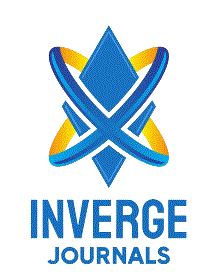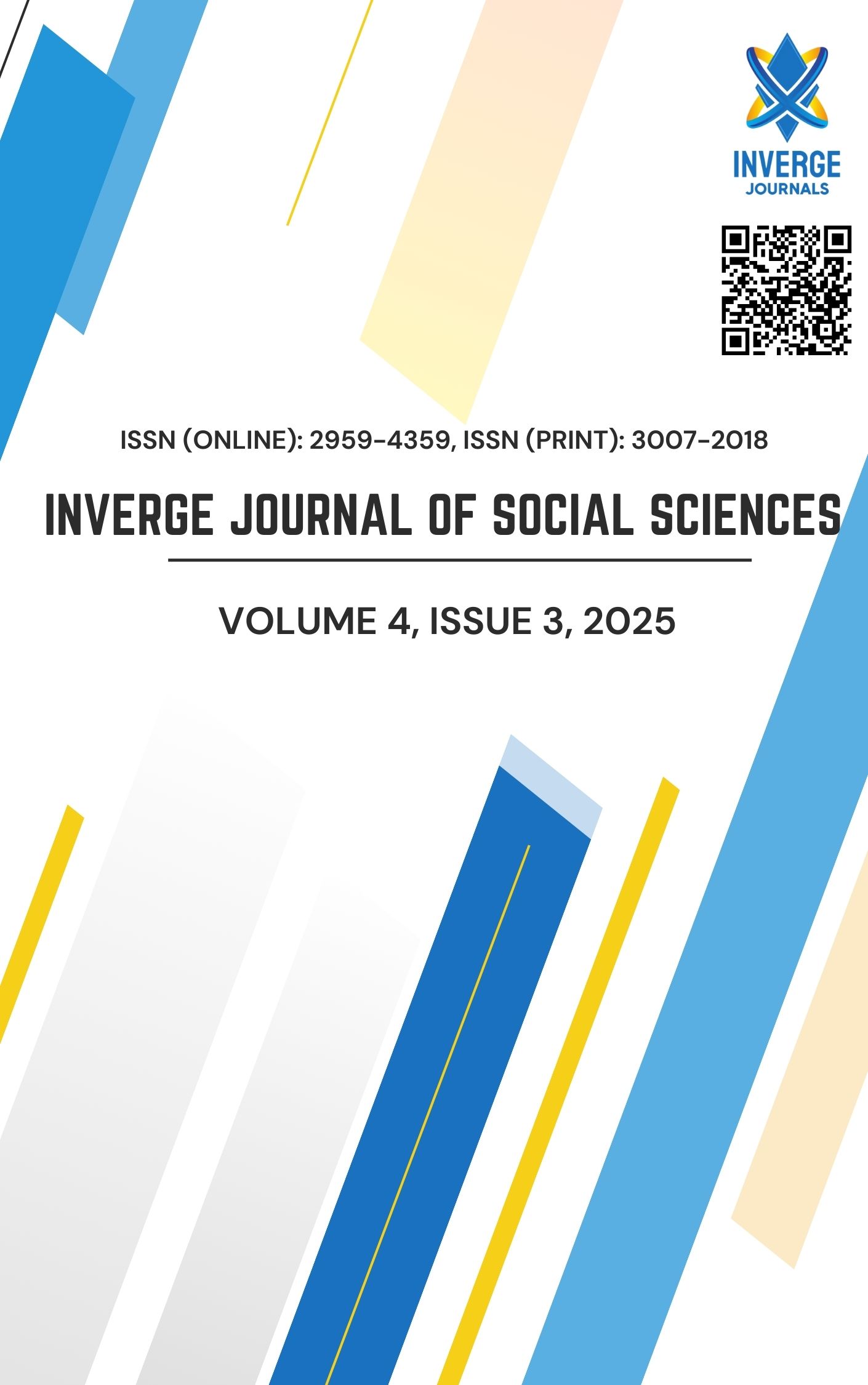Green Marketing Meets Green HRM: Building a Sustainable Brand through Workforce Engagement
DOI:
https://doi.org/10.63544/ijss.v4i3.158Keywords:
Green Marketing, Green Human Resource Management, Employee Engagement, Sustainable Brand, Organizational Culture, Leadership, Industry-Specific Variations, Environmental SustainabilityAbstract
This paper aims to provide an understanding of how Green Marketing and Green Human Resource Management (GHRM) intersect to contribute to the creation of a sustainable brand by increasing employee engagement. Sustainability in organizations is a reality not only in external marketing but also internally in human resource policies, framed within the broader commitment to environmental stewardship. While Green Marketing focuses on promoting eco-friendly products and practices to consumers, GHRM embeds sustainability into organizational culture, fostering employee participation in green initiatives. The study reveals a weak but positive correlation between Green Marketing, GHRM, and employee engagement, suggesting that both strategies enhance sustainability efforts, though their impact may be modest. Additionally, industry-specific variations exist, with Retail and Services sectors demonstrating higher employee engagement compared to Manufacturing. These findings highlight the importance of aligning internal policies, leadership support, and corporate messaging to strengthen employee involvement in sustainability. Moreover, the research underscores the role of training, incentives, and transparent communication in reinforcing green behaviours among employees. Organizations that integrate Green Marketing and GHRM effectively can cultivate a cohesive sustainability strategy, enhancing both brand reputation and workforce motivation. For businesses striving to achieve long-term environmental and organizational success, this study offers valuable insights into harmonizing external branding with internal green practices to drive meaningful engagement and sustainable growth.
References
Aust, F., & Luechinger, T. (2018). Employee engagement and environmental sustainability: Linking environmental behaviors to organizational commitment. International Journal of Environmental Research and Public Health, 15(11), 2397. https://doi.org/10.3390/ijerph15112397
Banerjee, S. B. (2003). Corporate social responsibility: The good, the bad and the ugly. Critical Sociology, 29(1), 1-25.
Bano, S., Rafiq-uz-Zaman, M., & Khalid, N. (2024). Assessing Health and Environmental Risks: Educational Awareness on Plastic Usage and Solid Waste Disposal in Bahawalpur. Journal of Asian Development Studies, 13(3), 917-929. https://doi.org/10.62345/jads.2024.13.3.75
Bansal, P., & Roth, K. (2000). Why companies go green: A model of ecological responsiveness. Academy of Management Journal, 43(4), 717-736.
Berrone, P., & Ricart, J. E. (2007). The impact of environmental innovation on competitive advantage. European Management Review, 4(1), 18-28. https://doi.org/10.1057/palgrave.emr.1500074
Bhattacharya, C. B., & Sen, S. (2004). Doing better at doing good: When, why, and how consumers respond to corporate social initiatives. California Management Review, 47(1), 9-24. https://doi.org/10.2307/41166284
Carter, C. R., & Easton, P. L. (2011). Sustainable supply chain management: Evolution and future directions. International Journal of Physical Distribution & Logistics Management, 41(1), 46-62. https://doi.org/10.1108/09600031111101420
Chen, Y. S. (2010). The drivers of green innovation and green image: Green marketing. Journal of Business Ethics, 93(2), 379-392. https://doi.org/10.1007/s10551-009-0223-9
Del Brío, J. A., Fernández, E., & Junquera, B. (2017). Organizational culture and environmental management: A case study in the Spanish industry. Business Strategy and the Environment, 26(3), 338-355. https://doi.org/10.1002/bse.1925
Fawehinmi, O., & Ojo, S. (2020). Green human resource management and employee green behavior: An empirical analysis. Corporate Social Responsibility and Environmental Management, 27(2), 630-641. https://doi.org/10.1002/csr.1837
Frey, S., & Rühli, E. (2019). The role of employee engagement in sustainable business. Journal of Business Ethics, 154(3), 877-889. https://doi.org/10.1007/s10551-017-3445-2
Harter, J. K., Schmidt, F. L., & Hayes, T. L. (2002). Business-unit-level relationship between employee satisfaction, employee engagement, and business outcomes: A meta-analysis. Journal of Applied Psychology, 87(2), 268-279. https://doi.org/10.1037/0021-9010.87.2.268
Hussain, M. S., Zafar, Z., Zafar, S., & Javed, I. (2025). A Serial Mediation Model of Green Workplace Behavior at Banking Sector of Pakistan: Do Green HRM Practices Matter?. ACADEMIA International Journal for Social Sciences, 4(3), 2117-2129. https://doi.org/10.63056/ACAD.004.03.0553
Jabbour, C. J. C. (2015). Green human resource management: A new pathway. International Journal of Business Research, 11(1), 48-61.
Jabbour, C. J. C., & Santos, F. C. A. (2008). The influence of human resource management practices on environmental management. Journal of Business Ethics, 81(1), 103-114. https://doi.org/10.1007/s10551-007-9484-3
Jackson, S. E., Renwick, D. W. S., Jabbour, C. J. C., & Muller-Camen, M. (2011). State-of-the-art and future directions for green human resource management: Introduction to the special issue on green HRM. German Journal of Human Resource Management, 25(2), 99-116. https://doi.org/10.1177/239700221102500203
Khalid, N., Arshad, I., & Rafiq-uz-Zaman, M. (2024). Enhancing Environmental Education to Promote Pre-Emptive Smog Mitigation Strategies in Urban Areas of South Punjab: An Overview. Journal of Asian Development Studies, 13(3), 956-964. https://doi.org/10.62345/jads.2024.13.3.75
Kim, Y., & Lee, S. M. (2015). Employee green behavior and its impact on sustainability in green organizations. Journal of Organizational Behavior, 36(6), 755-776. https://doi.org/10.1002/job.2017
Kramar, R. (2014). Beyond strategic human resource management: Is sustainable HRM the answer? International Journal of Human Resource Management, 25(8), 1057-1074. https://doi.org/10.1080/09585192.2013.816863
Lamm, E., Tosti-Kharas, J., & Williams, E. (2015). Organizational commitment in green organizations: Do environmental practices make a difference? Journal of Business Ethics, 130(2), 189-201. https://doi.org/10.1007/s10551-014-2218-4
Liu, Y. (2016). The impact of green branding on consumer purchase behavior. Journal of Marketing Research, 34(4), 489-501.
Macey, W. H., & Schneider, B. (2008). The meaning of employee engagement. Industrial and Organizational Psychology, 1(1), 3-30. https://doi.org/10.1111/j.1754-9434.2007.0002.x
Maignan, I., & Ferrell, O. C. (2004). Corporate social responsibility and marketing: An integrative framework. Journal of the Academy of Marketing Science, 32(1), 3-19. https://doi.org/10.1177/0092070303258971
Morrow, P. C., & McElroy, J. C. (2012). Job involvement and employee outcomes. Industrial Relations Research Association, 22(3), 134-157.
Ottman, J. A. (1993). Green marketing: Challenges and opportunities for the new marketing age. NTC Business Books.
Peattie, K. (1995). Environmental marketing management: Meeting the green challenge. Pitman Publishing.
Peattie, K. (2012). Green marketing. Business Strategy and the Environment, 21(4), 195-203. https://doi.org/10.1002/bse.717
Rafiq-uz-Zaman, M. (2025). Bridging the skills divide: A comparative study of skill-based education across SAARC countries with a policy roadmap for Pakistan. Social Science Review Archives, 3(3), 787-795. https://doi.org/10.70670/sra.v3i3.913
Rafiq-uz-Zaman, M., & Asif Nadeem, D. M. (2025). Unveiling Critical Success Factors for Skill-Based Education Programs: A Student-Centred Analysis in Pakistani Schools. Inverge Journal of Social Sciences, 4(3), 11-19. https://doi.org/10.63544/ijss.v4i3.139
Rafiq-uz-Zaman, M., & Nadeem, M. A. (2024). Comparative Analysis of Skill-Based Education Curriculum in Pakistan and India: A Contemporary Review. International Journal of Academic Research for Humanities, 4(3), 188-197. https://doi.org/10.5281/zenodo.13646448
Rafiq-uz-Zaman, M., & Nadeem, M. A. (2025). Gauging the gap: Student perceptions of skill proficiency in skill-based education within schools of Punjab, Pakistan. ACADEMIA International Journal for Social Sciences, 4(2), 2307-2317. https://doi.org/10.63056/ACAD.004.03.0553
Rafiq-uz-Zaman, M., Khalid, N., & Shafi, S. (2024). Historical Analysis of Environmental Degradation in Pakistan: A Narrative Review. Global Political Review, IX(IV), 24-35. https://doi.org/10.31703/gpr.2024(IX-IV).03
Rafiq-uz-Zaman, M., Khalid, N., & Susanto, E. (2025). Addressing Environmental and Social Challenges: A Mixed-Method Study on the Education and Inclusion of Eunuchs in South Punjab, Pakistan. Social Science Review Archives, 3(1), 284-299. https://doi.org/10.70670/sra.v3i1.311
Rafiq-uz-Zaman, M., Malik, N., Bano, S. (2025). Learning to Innovate: WhatsApp Groups as Grassroots Innovation Ecosystems Among Micro-Entrepreneurs in Emerging Markets. Journal of Asian Development Studies, 14(1), 1854-1862. https://doi.org/10.62345/jads.2025.14.1.147
Rafiq-uz-Zaman, M., Nadeem, M. A., & Rasheed, I. (2024). Empowering Women through Skill-Based Education in Pakistan: A Narrative Review. Global Sociological Review, IX(IV), 52-59. https://doi.org/10.31703/gsr.2024(IX-IV).05
Redman, T., & Snape, E. (2006). Human resource management: A critical approach. International Journal of Human Resource Management, 17(2), 238-266. https://doi.org/10.1080/09585190500404756
Renwick, D. W. S., & Jabbour, C. J. C. (2013). Green human resource management: A review and research agenda. International Journal of Human Resource Management, 25(9), 2389-2413. https://doi.org/10.1080/09585192.2013.816862
Renwick, D. W. S., Redman, T., & Maguire, S. (2013). Green human resource management: A review and research agenda. International Journal of Management Reviews, 15(1), 1-14. https://doi.org/10.1111/j.1468-2370.2012.00328.x
Rex, E., & Baumann, C. (2007). Socially responsible consumers: Profile of the green consumer in Sweden. Journal of Business Research, 60(4), 612-620. https://doi.org/10.1016/j.jbusres.2006.06.020
Saeed, B. B., & Ali, I. (2018). Green human resource management and employee green behavior: An empirical analysis. Corporate Social Responsibility and Environmental Management, 27(2), 630-641. https://doi.org/10.1002/csr.1837
Sharma, R., & Khan, M. M. (2019). Role of employee engagement in green human resource management. Journal of Environmental Management and Tourism, 10(4), 756-765. https://doi.org/10.14505/jemt.v10.4(36).01
Tushman, M. L., & O'Reilly, C. A. (2007). Organizational ambidexterity: The search for a balance between exploitation and exploration. Academy of Management Annals, 1(1), 213-248. https://doi.org/10.5465/078559811
Young, W., & Mattila, A. S. (2004). Environmental sustainability and corporate social responsibility: A review and future research agenda. Journal of Marketing Theory and Practice, 12(3), 88-99. https://doi.org/10.1080/10696679.2004.11658526
Zibarras, L. D., & Coan, P. (2015). HRM practices and employees' environmental behavior: A review and research agenda. International Journal of Human Resource Management, 26(15), 1989-2012. https://doi.org/10.1080/09585192.2014.988859
Downloads
Published
How to Cite
Issue
Section
Categories
License
Copyright (c) 2025 Abdullah Shah, Dr. Saqib Anwar Siddiqui, Saqib Ilyas, Dr. Ahmad Usman, Ahmad Mahmood

This work is licensed under a Creative Commons Attribution-NonCommercial-ShareAlike 4.0 International License.
The work is concurrently licensed under a Creative Commons Attribution-NonCommercial-ShareAlike 4.0 International License, which permits others to share the work with an acknowledgement of the authorship and the work's original publication in this journal, while the authors retain copyright and grant the journal the right of first publication.









